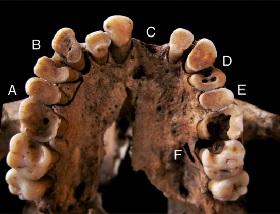Using AI to control energy for indoor agriculture
30 September 2024
Published online 20 January 2014

Cavemen had dental cavities, researchers have revealed, after analyzing fossilized jaws from a site in eastern Morocco.
Dental caries is a bacterial disease that forms in teeth of people consuming a carbohydrate-rich diet. While the disease is prevalent in agricultural societies whose carbohydrate intake is high, the incidence of cavities in hunter-gatherers is unexpected.
An international research team from Morocco, the United Kingdom and Spain has provided the earliest known evidence of the disease from remains found at the Taforalt caves in Morocco. It is thought that the people from whom the remains came consumed starchy wild plant foods.
The scientists analyzed fossilized partial or complete jaws of 52 adults and remains of charred plant food dating between 15,000 and 12,600 years ago, publishing their results in the Proceedings of the National Academy of Sciences.
They found carious lesions in 94% of the adults at Taforalt. Charred plant remains show that acorns from the Holm oak and pine nuts from the Maritime pine were the community's most abundant edible plants. The hunter-gatherers also ate juniper, wild pulses and wild oats.
The edible acorns were rich in fermentable carbohydrates and their storage and processing could have increased food stickiness in the mouth, providing an ideal environment for growth of acid-tolerant bacteria causing caries, such as Streptococcus mutans.
The Taforalt occupants processed the plant food on grindstones, releasing abrasive rock pieces into their food that might have contributed to high rate of wear on the teeth and root caries found in the fossil jaws.
doi:10.1038/nmiddleeast.2014.19
Stay connected: